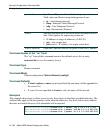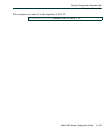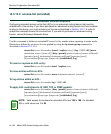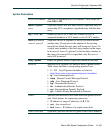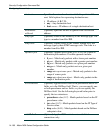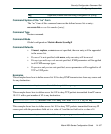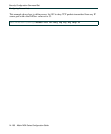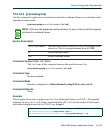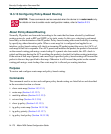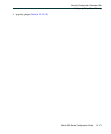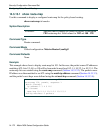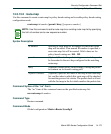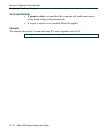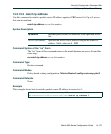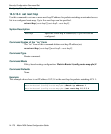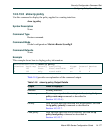
Security Configuration Command Set
Configuring Policy-Based Routing
14-170 Matrix NSA Series Configuration Guide
14.3.13 Configuring Policy-Based Routing
About Policy-Based Routing
Normally, IP packets are forwarded according to the route that has been selected by traditional
routing protocols, such as RIP and OSPF, or by static routes. In this case, selection is performed
based only on the destination of the IP packet. Policy-based routing adds more flexibility to routing
by specifying other alternative paths. When a route map list is configured and applied to an
interface, policy-based routing will check an incoming IP packet against the access list (ACL) of
each map of that list in sequence. If no ACL permit rule matches the packet, the packet is forwarded
on the normal routing path using a route lookup. If a permit rule does match, the ACL check is
exited and the map having the ACL matching the packet is checked for further routing instruction.
If the action of that map is permit, and a next hop is specified, policy-based routing will forward the
packet to the next hop specified in that map. Otherwise it will forward the packet on the normal
routing path using a route lookup. One route map list is allowed per routing interface.
Purpose
To review and configure route maps and policy-based routing.
Commands
The commands used to review and configure policy-based routing are listed below and described
in the associated section as shown:
• show route-map (Section 14.3.13.1)
• route-map (Section 14.3.13.2)
• match ip address (Section 14.3.13.3)
• set next hop (Section 14.3.13.4)
• show ip policy (Section 14.3.13.5)
• ip policy route-map (Section 14.3.13.6)
• ip policy priority (Section 14.3.13.7)
• ip policy load-policy (Section 14.3.13.8)
ROUTER: These commands can be executed when the device is in router mode only.
For details on how to enable router configuration modes, refer to Section 2.3.3.



